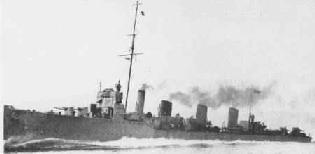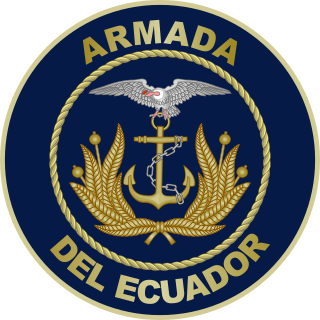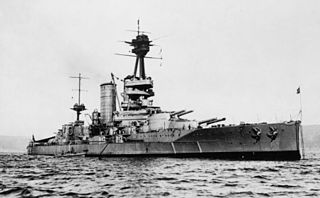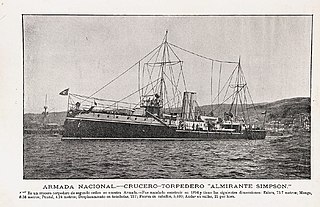
HMS Marlborough was a Duke-class Type 23 frigate formerly in service with the Royal Navy and the sixth ship to bear the name. She was named after John Churchill, 1st Duke of Marlborough. The ship entered service with the Royal Navy in 1991 and served in the Middle East. The frigate was taken out of service in 2005 and sold to Chile. The vessel entered service with the Chilean Navy in 2008 as Almirante Condell. The ship was significantly upgraded from 2020 to 2021 and remains in service.

The Chilean frigate Almirante Lynch (PFG-07) is a Condell-class frigate, the third ship of the Chilean Navy to bear the name.

In late 19th-century naval terminology, torpedo gunboats were a form of gunboat armed with torpedoes and designed for hunting and destroying smaller torpedo boats. By the end of the 1890s torpedo gunboats were superseded by their more successful contemporaries, the torpedo boat destroyers.

The Faulknor class were a class of flotilla leaders that were under construction in the United Kingdom for the Chilean Navy at the outbreak of World War I. Six ships were ordered by Chile, of which the first two were delivered to Chile before the outbreak of the war. The remaining four ships were purchased by the British, taken over and completed for the Royal Navy for wartime service. In common with Royal Navy convention, they were named after famous Royal Navy captains of the past, in this case the members of the Faulknor family.

The Condell class was the name given to a class of two new build and upgraded type Leander-class frigates of the Chilean Navy, Almirante Condell and Almirante Lynch.
Several ships of the Chilean Navy have been named Almirante Condell after Admiral Carlos Condell (1846–1912), hero of the Battle of Punta Gruesa during the War of the Pacific:
Several ships of the Chilean Navy have been named Almirante Lynch after Patricio Lynch (1824–1886), a Chilean hero during the War of the Pacific
HMS Faulknor was a British destroyer of the First World War. She was purchased by the Royal Navy whilst still under construction in Britain for the Chilean Navy who had ordered her in 1912 as part of the Almirante Lynch class. She was renamed after the Faulknor family of British nineteenth century naval officers.

Chilean frigate Almirante Condell (PFG-06) was a Condell-class frigate of the Chilean Navy, and was the third ship in the Chilean Navy to bear this name.
Almirante Lynch-class destroyer may refer to one of the following ship classes of destroyers of the Chilean Navy:

The torpedo gunboat Almirante Lynch and her sister ship Almirante Condell, were purchased in England and launched in 1890.

The Ecuadorian Navy is an Ecuadorian entity responsible for the surveillance and protection of national maritime territory and has a personnel of 9,400 men to protect a coastline of 2,237 km which reaches far into the Pacific Ocean. The vessels are identified by a ship prefix of B.A.E.: Buque de la Armada del Ecuador or L.A.E.: Lancha de la Armada del Ecuador.

The Battle of Caldera Bay, or the Sinking of Blanco Encalada, was a naval engagement fought in the Caldera Bay during the 1891 Chilean Civil War between Balmacedist and Congressional naval forces on 23 April 1891. It involved two Balmacedist torpedo boats of the Almirante Lynch-class, and the Congressional armored frigate Blanco Encalada.

The Almirante Latorre class consisted of two super-dreadnought battleships designed by the British company Armstrong Whitworth for the Chilean Navy. They were intended to be Chile's entries to the South American dreadnought race, but both were purchased by the Royal Navy prior to completion for use in the First World War. Only one, Almirante Latorre (HMS Canada), was finished as a battleship; Almirante Cochrane (HMS Eagle), was converted to an aircraft carrier. Under their Chilean names, they honored Admirals (Almirantes) Juan José Latorre and Thomas Cochrane; they took their British names from what was then a dominion of Canada and a traditional ship name in the Royal Navy.

A torpedo cruiser is a type of warship that is armed primarily with torpedoes. The major navies began building torpedo cruisers shortly after the invention of the locomotive Whitehead torpedo in the 1860s. The development of the torpedo gave rise to the Jeune École doctrine, which held that small warships armed with torpedoes could effectively and cheaply defeat much larger battleships. Torpedo cruisers fell out of favor in most of the great power navies in the 1890s, though many other navies continued to acquire them into the early 1900s.

Almirante Simpson was a unique design of torpedo gunboat, built by the British shipyard Laird Brothers. Acquired by the Chilean Navy in 1895, during construction. The ship had a brief service in Chile, being transferred to the Ecuadorian Navy in 1907 and renamed Libertador Bolívar. She was the first Ecuadorian warship of the 20th century and had an important participation in the Ecuadorian Civil War of 1913–1916. After the war, the ship was retired and then sank in 1928.











